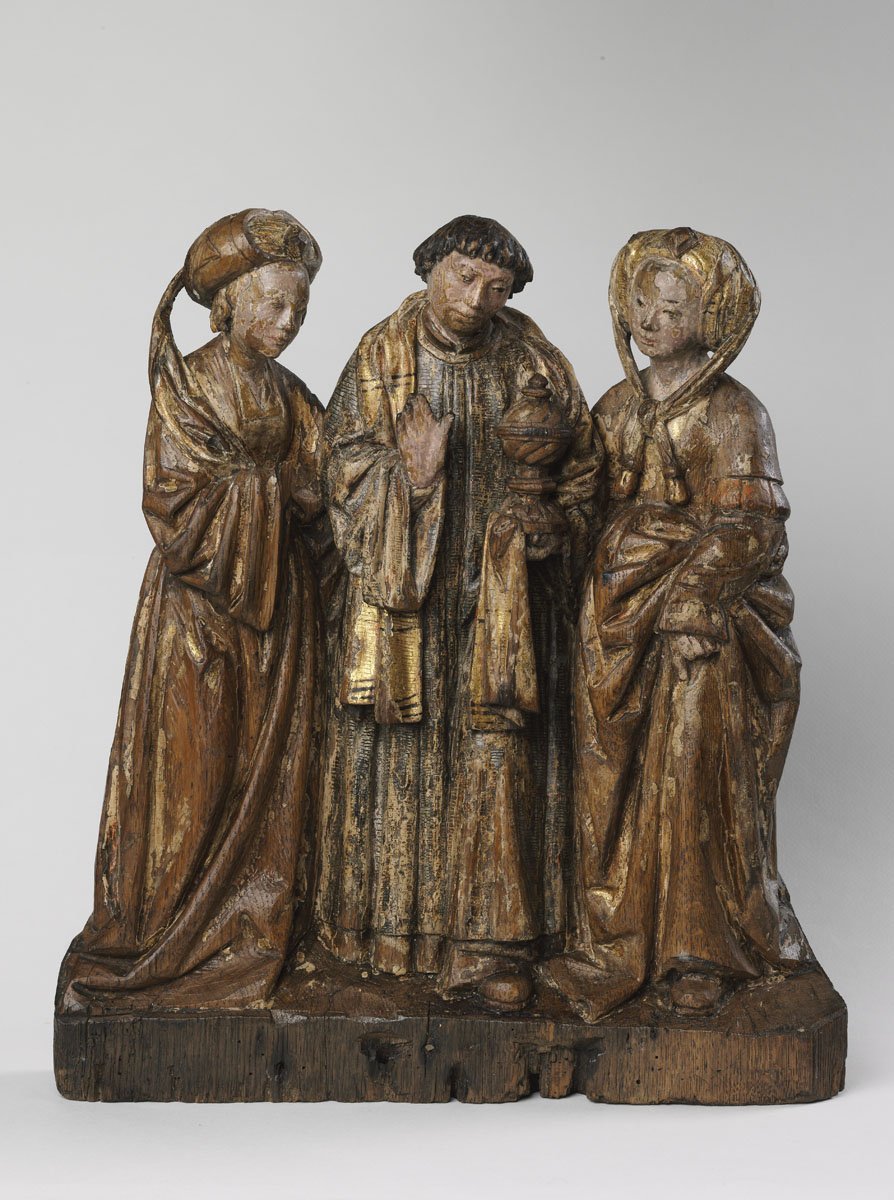
Figure of a Deacon and of Two Women
Sculptures
| Artist | |
|---|---|
| Culture | Italian |
| Date | ca. 1335 |
| Object type | sculpture |
| Medium, technique | alabaster |
| Dimensions | 36 × 12 × 7 cm |
| Inventory number | 7167 |
| Collection | Sculptures |
| On view | Museum of Fine Arts, First Floor, European Art 1250-1600, Cabinet 18 |
The Hungarian National Museum purchased this gilded alabaster sculpture in 1836, as part of the first collection of the art collector and historian, Count Miklós Jankovich. A hundred years later the statuette was transferred to the Museum of Fine Arts where it is still held today. The influence of the ivory statuettes that became popular in the fourteenth century can be felt in this artwork’s refined and uniform composition. Mary’s numinous face, her contemplative smile, and her whole being radiate the spirituality of the Christian journey through life. Thus, although the original function of the work is unknown, it was likely produced as an object of private devotion, possibly as part of a tabernacle or an altar. The creator of this small masterpiece was probably the sculptor and goldsmith Andrea Pisano, who was working on the bronze gate of the Florentine Baptistry around this time. The reliefs made for the bronze gate show a close affinity with the statuette.
Balogh, Jolán, Katalog der ausländischen Bildwerke des Museums der bildenden Künste in Budapest, IV – XVIII. Jahrhundert: 1. Textband Bd. 1, Akadémiai Kiadó, Budapest, 1975, p. 42-43., no. 25.
Pope-Henessy, John, “Italian sculpture – Budapest and Paris”, Apollo 102.161-166 (1975), p. 474-475.
Dal Poggetto, Maria Grazia Ciardi Dupré, “Recensione – Jolán Balogh, Katalog der ausländischen Bildwerke der Museums der bildenden Künste in Budapest. IV-XVIII Jahrhundert Budapest, Akadémiai Kiadó, 1975 Vols. 2: I, Textband; II, Bildband.”, Prospettiva 8-11 (1977), p. 63-67.
Szmodisné Eszláry, Éva, A Régi Szoborgyűjtemény kincsei, Szépművészeti Múzeum, Budapest, 1994, p. 9, 13-14, ill. 3.
Szmodisné Eszláry, Éva, The treasures of the Old Sculpture collection, Szépművészeti Múzeum, Budapest, 1994, p. 9, 13-14.
The Museum of Fine Arts Budapest: guide, Museum of Fine Arts, Budapest, 2006, p. 135-136, no. 178.
Szépművészeti Múzeum: Remekművek az ókortól napjainkig. 100 év, Szépművészeti Múzeum, Budapest, 2006, no. 25.
Museum of Fine Arts, Budapest: Masterpieces from the Collection, Museum of Fine Arts, Budapest, 2006, no. 25.
Szépművészeti Múzeum: Remekművek az ókortól a 18. század végéig, Szépművészeti Múzeum, Budapest, 2019, p. 80-81.
Museum of Fine Arts: Highlights from the Collection, Museum of Fine Arts, Budapest, 2019, p. 80-81.
Museum of Fine Arts: highlights from the collection, Szépművészeti Múzeum, Budapest, 2019, p. 80-81.
Múzeumi kalauz: Vezető a Szépművészeti Múzeum régi gyűjteményeihez, Szépművészeti Múzeum, Budapest, 2021, p. 70-71.
Museum Guide: Old collections of the Museum of Fine Arts, Budapest, Museum of Fine Arts, Budapest, 2021, p. 70-71.
This record is subject to revision due to ongoing research.